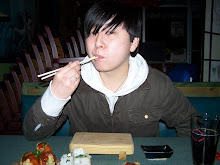
A puzzle game that will have you addicted before you can say "campy."
Platform: Game Boy Advance, Neo Geo Pocket Color, N-Gage
Version Reviewed: Game Boy Advance
Published by: THQ/Sega
Developed by: Sonic Team
Genre: Puzzle
Players: 1-4
US Release Date: October 5, 1999
ESRB Rating: Everyone
Story: Puzzle games, as a whole, have come a long way in terms of story. Normally heavily-steeped in the realm of science-fiction or fantasy, we find ourselves chaining together multicolored gems to blast our enemies with fireballs or jumping through walls via space-time portals. While character development might still take a backseat to gameplay, it can safely be said that puzzle games now primarily utilize protagonists undergoing some sort of conflict or quest. This, in itself, is a gigantic step away from the impersonal falling, gray blocks of yesteryear - finally, we puzzle fans are able to take control (to a degree) of a hero with a purpose. No matter how kitschy many of these so-called "stories" may seem, it's at least something.
With this being said, the story of Puyo Pop is as kitschy as they come. Apparently, Puyo Pop is part of the Puyo Puyo series of puzzle games, all starring a young sorceress Arle and her fat, bunny-ish pet named Carbuncle - this being the first Puyo Puyo game I've played, I had no preexisting connection with these characters. Arle and Carbuncle travel their fantasy setting in complete, oblivious glee, and are randomly challenged to puzzle battles by a plethora of insane characters that would fit in with the cast of any teen anime series. In fact, Puyo Pop's story is most easily-digested if you play it expecting just that: an extremely campy, goofy, sugar-coated anime show. This is a Japanese game, and Sonic Team does not want you to forget it. Since there really isn't much in terms of deep story or character development, forgetting might prove easier than they anticipated.
...a wild Pokémon appeared! What? Wrong game? Damn.
Graphics: Drawing heavily from the pool of easily-accessible anime artist talent in Japan, Puyo Pop is a festival of bright, explosive colors and gigantic, glimmering eyeballs. While by no means impressive, the static "cutscenes" still make great use of the Game Boy Advance's extensive color palette. Battle screens come alive with a multitude of little details and animations that any puzzle fan can appreciate. Don't prepare to be dazzled, but Puyo Pop certainly knows how to keep things bright and fun.
Wait until you see Arle's REAL excited face.
Sound/Music: Puyo Pop's soundtrack consists of all that is bouncy and light-hearted, wreaking absolute havoc on the Game Boy Advance's horns and chime synthesizers. Regardless of its bubblegum-sweet sensibilities, I found myself unintentionally bobbing my head along to some of the tracks each time I booted up Puyo Pop. High-energy, and never dark or sinister in any way, Puyo Pop's music is a fitting addition to this game's cotton candy theme.
Going hand-in-hand with Puyo Pop's musical score is the game's sound effects, which sound like they were borrowed from an early Super Nintendo RPG; note that this isn't a bad thing. Sonic Team has even included tiny voice clips (in original Japanese!) during battle, breathing even more life into the already frantic fights. These vocal bits alone add another ten points to Puyo Pop's already appropriate placement on the "kitsch" scale.
Gameplay: The battle elements of Puyo Pop play almost exactly like a relatively-unknown Windows game, called Qwirks (from Tetris creator, Alexey Pajitnov) that I used to have as a kid. A set of two, colored blobs are dropped into the play area; matching four or more of these pieces, or making chains will remove them from the play field and drop clear "blocks" onto your opponents side, which will prevent them from creating sets or chains of their own. If you or your opponent's screen becomes too full to fit another block or blob, that person loses the match. It may sound basic (and in truth, the concept is), but each stage you unlock yields new enemies, who become progressively harder as the game goes on. The in-game tutorials are worked seamlessly into the experience and prove to be helpful practice for future opponents, giving the game a smooth learning curve. The whole gameplay experience is a prime example of the key elements true puzzle fans look for in a game: simplistic controls, pick-up-and-play concepts, and a gauntlet of intense, fast-paced challenges. Additional time with the story mode will unlock new obstacles and a bonus challenge mode, but the real fun is available if you have a link cable: a single game cartridge allows up to four players to duke it out, Puyo Pop style, giving this already addictive title some great replay value.

Forget swords and magic - you know it's on when the blobs start falling!
Overall: If you decide to take on Puyo Pop, I hope you have your tent and sleeping bag ready, because this title is beyond "campy." While many will be turned off early by the cutesy art style, bouncy music, and sickly-sweet dialogue, I urge you to stick around for what is, at its heart, one of the most entertaining puzzle games of the Game Boy Advance's time. The core gameplay is solid as a rock, and is sure to not disappoint those looking for an exciting, high-paced puzzle experience - even if it is drenched in an extra-large helping of kitsch-syrup.
Score (out of 10): 8.5


No comments:
Post a Comment